From skirts to scrubs: the evolution of SickKids nursing uniforms
Summary:
Nurses are often the first people patients interact with when they enter care at SickKids. Over the years, as their job roles have changed, so too have their uniforms. During Nursing Week (May 8-12), we take a look back at nursing uniforms at SickKids.
Nurses are often the first people patients interact with when they enter care at SickKids. Over the years, as their job roles have changed, so too have their uniforms. During Nursing Week (May 8-12), we take a look back at nursing uniforms at SickKids.
1880s
Although none of the hospital’s founders started out with any formal nursing training, they performed many tasks relating to patient care, and are generally considered to be the hospital’s first nurses. Elizabeth McMaster, one of the founders of SickKids, was known to wear a striped dress with a white apron covering the lower half of the dress, and a white cap. It wasn’t until 1886, when a prospective nurse applied to the hospital, asking if it would be possible to train as a nurse, that the staff agreed to provide practical instruction, and two years later, she became the first graduate of the hospital’s School of Nursing. In early 1889, after 14 years at SickKids, McMaster formally trained as a nurse in Illinois.
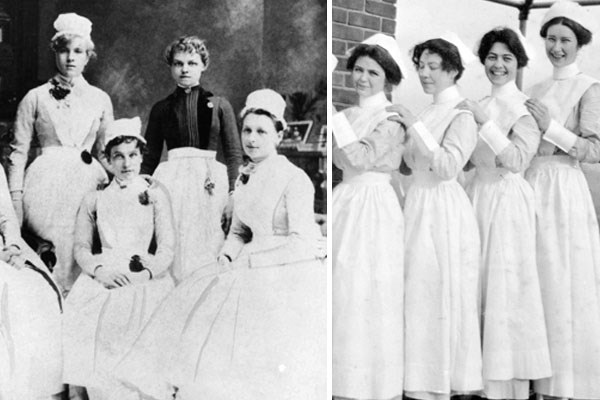
1900s
This style of uniform is typical of what SickKids nurses wore in the late 19th and early 20th centuries. Dresses in this era were long, practically reaching the floor – dresses which only reached the top of the boots were not worn at SickKids until after the First World War. Nurses also wore a long, white, cotton apron with long ties, a lace-trimmed cap, a shawl, and a neckerchief held in place with a brooch. Completing the uniform were black stockings and black, high-buttoned shoes, as well as several tools of the trade worn about the waist, including a black pin cushion and scissors suspended from a ribbon.
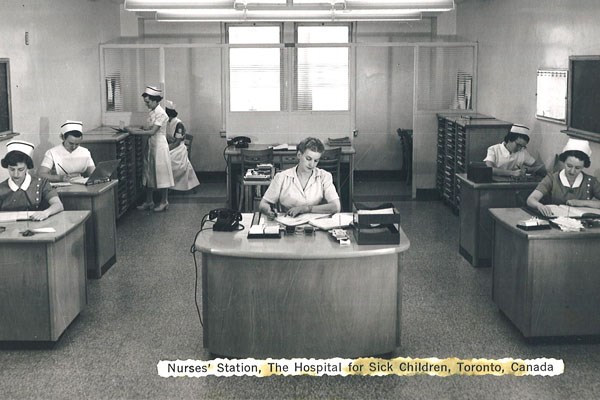
1950s
As the hospital relocated to its current location at 555 University Avenue, nurses were required to wear traditional white uniforms. Nurses were also expected to pin their hair up and wear a heavily starched cap (they were generally not permitted to have short hair until the 1960s.) The 1950s also saw the introduction of official hospital capes, which were optional outdoor wear in winter. Nursing supervisors and instructors wore solid blue uniforms to distinguish them from student nurses. The variety of nursing uniforms during the 1950s can be seen in this Nurses’ Station photo.
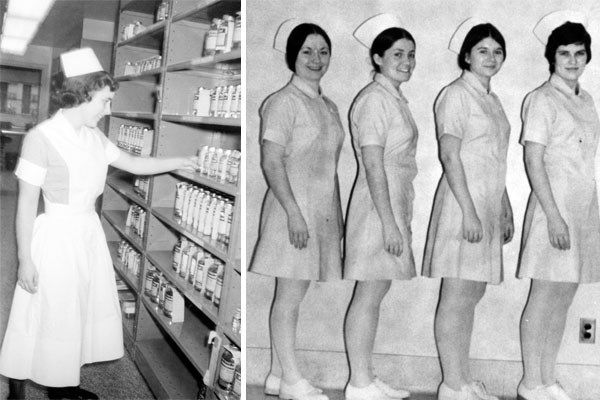
1960s
Most staff nurses in the 1960s wore classic, white uniforms, although the hemlines rose considerably over the time. There was also some flexibility allowed in terms of sleeve and skirt length. Traditional nursing caps were still mandatory for nurses until the early 1970s. When on break or off-duty, SickKids nurses were expected to take their uniforms to nearby laundry services on Gerrard Street.
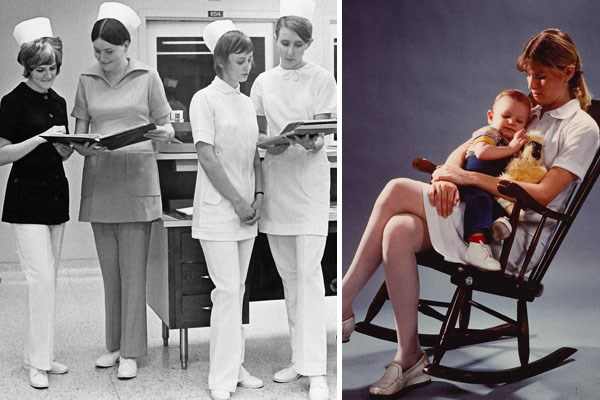
1970s
Up until the 1970s, SickKids required its nurses to wear specific uniforms. Starting in the early 1970s, nurses were permitted to choose their own work clothes, provided that their choice aligned with a gradually relaxing dress code. The option of wearing pants instead of a dress or skirt was introduced in 1970, and caps became optional shortly thereafter. Companies which manufactured nursing uniforms began introducing pastel colours. Later in the decade, the hospital introduced simple nametag pins, which were worn either on the shirt or on an accompanying surgical lab coat.
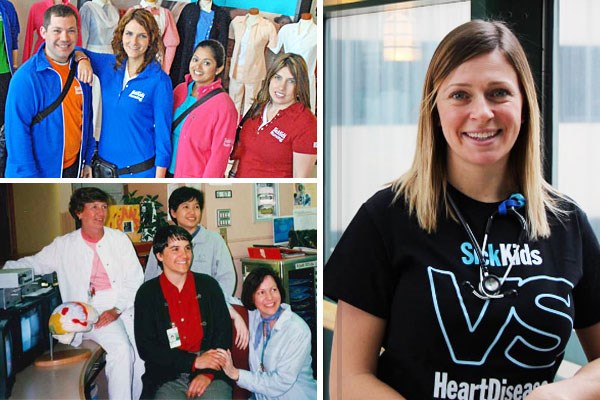
2000s
The nursing dress code relaxed even further during the 1980s and 1990s, although the precise regulations sometimes varied according to the unit. By the mid-2000s, most SickKids nurses wore street clothes. In response to concerns that patients and families could not easily identify which staff members were nurses, SickKids partnered with Roots in 2007 to introduce a new line of SickKids nursing clothing. Wearing the Roots clothing was optional, but as an incentive, all nurses were allowed three full outfits. The Roots garments were designed to be both functional and comfortable, and were deliberately made of fabrics which could be easily washed and which would not be prone to carrying bacteria. Today, nurses can be seen rocking the latest SickKids VS t-shirts throughout the hospital!

